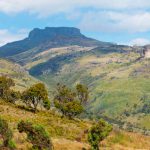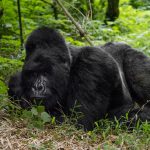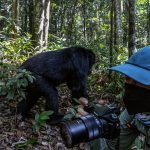This is Tanzanians flagship product in the tourism industry, a destination that leaves all tourists mesmerized and very satisfied by what they have experienced.
The question is? , What secret does one miss when you don’t visit Serengeti national park?
To begin with, Serengeti national park is one of the oldest national parks in Tanzania in the Serengeti ecosystem in Masai Mara and simuyu region; it derives its name from the Masai word sirugitu which means “the place where the land moves forever”, suitably describing the sea of endless grasslands and rolling, grass hills.
Initially, the open plains of the eastern Mara Region used to be for the Masai people to graze cattle, which they named “endless plains, when the first European explorer, Austrian Oscar Baumann, visited the area in 1892. It is important to know that the name “Serengeti” is a guess of the word used by the Masai to explain the area, siringet, which literary means “the place where the land runs on forever”.
In records, the first American to enter the Serengeti whose name is Stewart Edward White explored the northern Serengeti in 1913. Then he returned to Serengeti in the 1920s and camped in the area around Seronera for three months.
But due to hunting, the lions became scarce making the British colonial administration designate the area AS a partial game reserve of 800 acres (3.2 km2) in 1921 and a full one in 1929. This the beginning of Serengeti National Park, which was established in 1951 and gained more fame after the initial work of Bernhard Grzimek and his son Michael in the 1950s, they produced and film, Serengeti shall not die, which was widely recognized as one of the early pieces of nature conservation documentary.
The park is Tanzania’s oldest national park providing the main route to the Northern Safari Circuit around Lake Manyara National Park, Tarangire National Park, Arusha National Park, and the Ngorongoro Conservation Area. The park has approximately 2,500 lions and over 1 million wildebeest which are believed to be God’s very last creation with different body parts that resemble those of other animals.
The park is covering an area of approximately 15,000 km², yet when the area covered by the migration, this figure can be doubled in size! When thinking of Serengeti, several Travelers see a vast, endless plain covered in migrating Wildebeest and Zebra.
Besides, the grassland in the Serengeti region (particularly in the southern regions), the gigantic area offers a wide range of landscapes and ecosystems with endless grassy plains that give way to areas of iconic acacia forests, to lush riverine vegetation, desiccated soda lakes, and ageless granite outcrops. It is an ultimate highlight of great Northern Tanzania and a true wildlife reserve in East Africa.
It is at this destination that visitors witness the famous for its massive annual migration of the wildebeest and zebras seeking new pastures, these herds shift from the southern plains to the Northern side. This migration lasts for roughly 10 months in Tanzania, comprising of over 2 million Wildebeest and Zebra wandering through an area larger than Leister province. On the other hand, it is very possible to miss this lifetime migration due to the enormous size of this area, it is at this point that the crocodiles an hippos are very active, waiting for their meal, the lions also very anxious and steadfast for what to eat.
This annual migration follows a yearly cycle that animals use on a 1,200 km journey through Tanzania and Kenya. Many predators that prey on the great herds lie in wait for their annual food. These are the crocodiles, large pride of Lions and a significant population of Cheetahs and others such as a large number of Leopards, Hyenas and Painted Dogs, hippos, eland, impala, antelope, baboons, monkeys, and approximately 500 species of birds in the park.
The Northern Serengeti offers visitors a chance of escaping the crowds; this region of the park –stuck between the Central Serengeti and Kenya’s Masai Mara National Reserve to the north – is remote yet reasonably inaccessible, so, the lucky travelers who make it to this area of the Serengeti are rewarded with stunning landscapes of green rolling hills, granite outcrops and acacia woodlands dotting open savanna, unbelievable wildlife, and with massive herds of wildebeest and zebra making risky cross of the croc-infested Mara River during the Great Migration in June and July and again in September, October and November. It is important to note that this sector of the park is home to the greatest absorption of elephants, lions, leopards, cheetah, and hyena as well as diverse animals such as giraffe, topi, eland and hippo in the park.
Walking safaris are a recent addition in the Serengeti, however, you can also engage in hot air ballooning that gives you a chance of catching the clear views of these animals, Game drives in both the north and the south, birding, and many more.
For all travelers, Serengeti national park is open all year round but the most recommended time to visit this amazing destination is June until October, while for Mara River crossings the peak months are from July to September.
Accommodation options are limited in the Northern Serengeti since there are very few permanent lodges in the area. During the peak season of the Migration, July to October, camps are erected into the areas strategically located to catch the exciting Mara River crossings. Most of the accommodation is luxury, though an option for budget and midrange travelers can also be got.
Serengeti national park is a True hub for wildlife and diversity, it can be accessed through road and air depending on your choice, and so, you remain with no Excuse but to book your trip.






